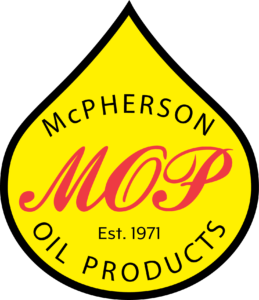Why the Need for So Many Types of Lubricants?
09 Sep 2020, Posted by in Industry InformationThere are hundreds of different types of lubricant technologies on the market, each one designed for the specific needs and conditions of a given application. If you work in an industry where you have lots of applications within a single operation – such as mining, construction, or general manufacturing – this reality is painfully obvious. In some cases, the wide variety of lubricants used can lead to challenges with lubricant storage and handling, proper application, and more.
But, while lubricant technology is advancing to the point where new technologies can be used for multiple applications, the truth is that there isn’t a one-size-fits-all approach to most applications. And, it’s important to understand why.
So, this article focuses on what we lubricate, the forces we must overcome, and some of the factors affecting lubricant development and deployment.
What do we lubricate?

In all machines, there are only three mechanisms to be lubricated:
- Bearings: Both journal and plain.
- Gears: All types, including right angle and parallel shaft.
- Cylinders: Found in an engine, compressor, hydraulic actuator or pump.
It’s pretty remarkable that there are hundreds of different lubricants for just three general applications – the reason why is down to the different factors affecting lubrication.
The factors that affect lubrication
First, there’s force. Force is defined as the push or pull on an object with mass that causes it to accelerate. This force manifests itself as sliding and rolling friction.
Bearings, for example, are able to provide both types of motion – sliding (journal bearing) and rolling (anti-friction bearings) motion. Gears demonstrate sliding as the teeth enter and exit full mesh and rolling at complete mesh. Cylinders only have to overcome sliding force as the two masses move laterally against each other.
The amount of sliding or rolling friction that must be overcome depends on a number of additional variables, including:
- Load: Friction varies directly with load. As load increases so does friction. As the load varies in amount and duration, the choice of oil film (viscosity) and the additives are impacted.
- Speed: Friction increases with speed. The lubricant chosen must be applicable for the speed – the faster the speed the lighter the oil required.
- Surface finish: The contact points between the mating surfaces, often called asperities, also matters. If the surface finish is poor, the lubricant will need to not only keep the surfaces apart but also to chemically bond to the metal surface to prevent welding contact.
- Temperature: Both operational and ambient temperature matters. Oil viscosity decreases with increased temperature. Sufficient film must be maintained to help reduce friction. Temperature increase also impacts the additives required, particularly anti-oxidants.
A closer look at load
Load is a particularly important factor, as the type of contact provided by load results in frictional conditions which affect lubricant choice.
The various types of contact include:
- Boundary lubrication: This occurs at start-up, low speed, and/or high loads. During boundary conditions, two mating surfaces begin to move against each other and are in contact. In the transition from static to dynamic motion, the surface asperities touch, resulting in wear.
- Hydrodynamic lubrication: This takes place when the oil film is sufficient to completely separate the two mating surfaces. Under this condition, there is no risk of opposing asperities touching and any friction encountered is within the lubricant itself.
- Mixed lubrication: This falls between boundary and hydrodynamic conditions. It contains characteristics of both as there are regions of no metal-to-metal contact and areas with some surface interaction.
- Elastohydrodynamic lubrication: This results from two non-conforming surfaces coming into rolling contact under high load and contact pressure. Under load, the surfaces actually distort and the oil film molds to the surface.
Developing lubricant technologies
When designing lubricants for today’s marketplace, manufacturers have to consider all of the above factors. There are a number of different formulation possibilities thanks to the wide variety of base stocks and additives at their disposal.
As technology becomes more advanced, manufacturers can develop lubricants that are suitable for a wider range of applications. This can help operators streamline lubricant inventory, reduce the chance of lubricant misapplication, and improve equipment reliability. Together, these benefits can help reduce costs and give operators more time to focus on delivering on their other productivity or sustainability ambitions.
*Article by Russo with ExxonMobil’s Lube Talk
McPherson Oil is an Authorized Mobil Distributor.
McPherson Oil, a family-owned and operated business, has provided the southeast with quality products and services since 1971. As a proud distributor of ExxonMobil products, we offer these services through our belief in TPM – Total Petroleum Management. Through our TPM program, McPherson brings a valued-added difference to its customers by meeting all of their petroleum needs. Our commitment to our customers is reflected in our company vision and mission statements. McPherson proudly services Alabama, Arkansas, North and Central Georgia, Mississippi coast, Florida panhandle, Greater Chattanooga Area, the Greater New Orleans Area, and Louisiana Gulf Coast.
